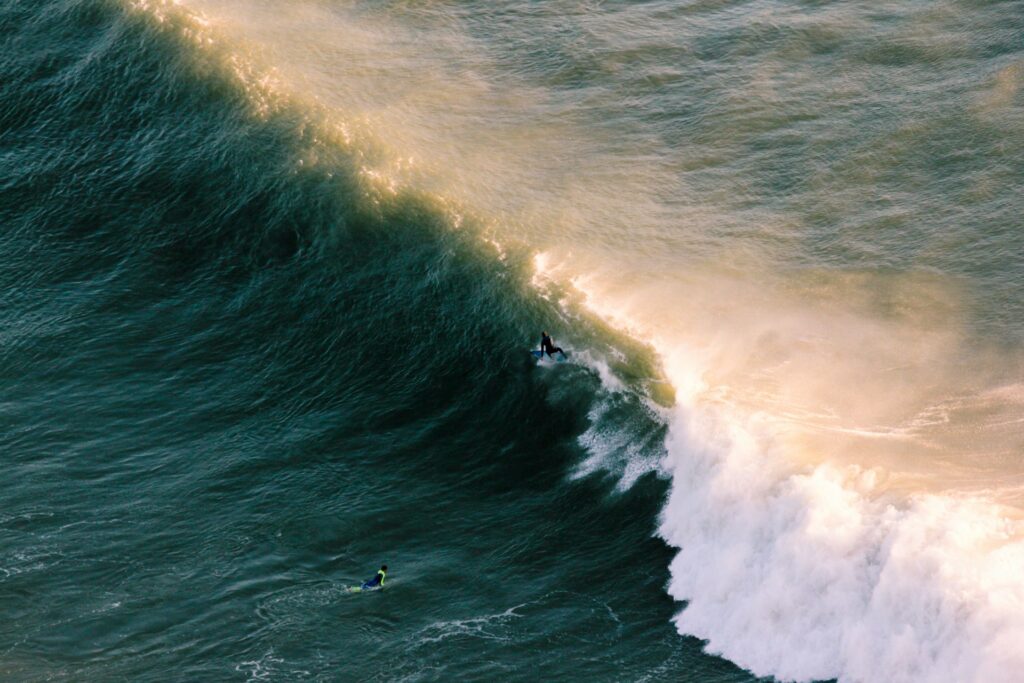How Do Tides Affect Waves & Surfing Conditions?
Lauren Collison June 26th, 2024 Posted In: Articles Tags: Surfing
When it comes to surfing, the ocean’s tides and waves play a crucial role in shaping the perfect conditions for a ride. And while the pull and crash of the waves can be a mesmerizing experience to witness and ride, did you know that the rhythm of these waves is influenced by tides?
Understanding the relationship between tides, waves, and surfing conditions is essential for any surfer looking to catch the perfect wave. So how do tides affect waves and surfing conditions? Read on the find out!
Understanding Tides
Tides are the periodic rise and fall of sea levels caused by the gravitational forces exerted by the moon and the sun, coupled with the rotation of the Earth. Typically, coastal areas experience two high tides and two low tides each day, known as semi-diurnal tides. Some regions may experience diurnal tides. With one high tide and one low tide each day, or mixed tides, which vary in height and frequency.
How Do Tides Affect Waves?
To answer the question of how do tides affect waves, it’s important to recognize that tides significantly influence the size, shape, and power of waves. Here’s a closer look at how this happens.
Wave Size and Height
During high tide, water levels rise, and waves tend to be larger and more powerful. This is because the incoming tide provides additional water volume, enhancing wave formation. Conversely, during low tide, waves are generally smaller and less powerful due to reduced water levels.
Wave Shape
The shape of the waves is also affected by the tides. High tide can create fuller, rounder waves that break closer to the shore, making them ideal for certain types of surfing maneuvers. Low tide often results in steeper, more hollow waves that break farther out, offering a different kind of challenge for surfers.
Wave Break
The point at which waves break, known as the surf zone, shifts with the tides. During high tide, waves break closer to the shore, while low tide causes waves to break further out. This movement affects where surfers position themselves to catch the best waves.
How Does Tide Affect Surfing?
Now that we’ve explored how tides affect waves, let’s dive into how does tide affect surfing. Tides play a crucial role in determining the quality of the surfing conditions, influencing everything from wave consistency to the safety of the surf zone.

Optimal Surfing Times
The best surfing conditions often depend on the tide. Many experienced surfers prefer to surf during mid-tide, when the tide is transitioning from high to low or vice versa. This period usually offers the most consistent and manageable waves. High tide can be great for beginners due to gentler waves, while low tide may appeal to advanced surfers seeking more challenging conditions.
Surf Breaks and Tide Compatibility
Different surf breaks respond uniquely to tidal changes. For instance, reef breaks, which occur over underwater rock formations or coral reefs, often produce the best waves during low to mid-tide when the water is shallower.
Beach breaks, which occur over sandy bottoms, can offer excellent waves during high tide when the increased water depth creates smoother, more rideable waves.
Safety Considerations
Tidal changes can also impact the safety of the surfing environment. Low tide can expose underwater hazards such as rocks and coral, posing risks to surfers. High tide can bring stronger currents and rip tides, requiring surfers (and swimmers) to be more cautious and aware of their surroundings.
Other factors to consider that could influence surfing conditions include:
- Wind. Wind direction and strength can dramatically affect wave quality.
- Swell. The size, direction, and period of the swell all influence the quality of the waves reaching the shore.
- Local geography. The shape of the coastline, underwater topography, and presence of natural or artificial structures (like piers and jetties) can all affect how waves form and break.
Tips for Surfing with the Tides
To make the most of your surfing experience, consider these tips for understanding and leveraging tidal conditions:
- Check Tide Charts: Always consult local tide charts before heading out. These charts provide essential information on tide times and heights, helping you plan your surf sessions accordingly. You could also check or read swell charts.
- Observe Local Conditions: Spend time observing the local surf breaks and how they respond to different tidal conditions. This knowledge can help you identify the best times and spots to surf.
- Stay Flexible: Be prepared to adapt your plans based on changing conditions. Sometimes, the best waves might not align with your initial schedule, so staying flexible can lead to better surfing experiences.
- Respect the Ocean: Always prioritize safety and respect the power of the ocean. Be aware of your limits, and don’t hesitate to seek local advice or surf with more experienced companions if you’re unsure about the conditions.
Riding the Waves of Tidal Knowledge
Understanding how tides affect waves and how does tide affect surfing is key to becoming a more skilled and knowledgeable surfer. By recognizing the intricate relationship between tidal movements and wave formation, you can better anticipate and adapt to the ever-changing conditions of the ocean.
So, next time you’re gearing up for a surf session, take a moment to consider the tides—your perfect wave might just be a tide change away!

